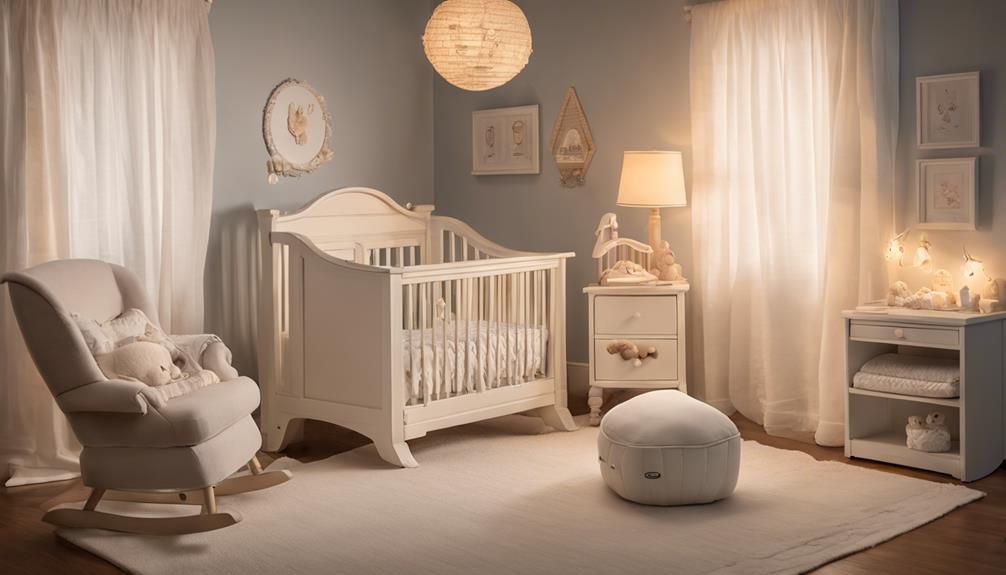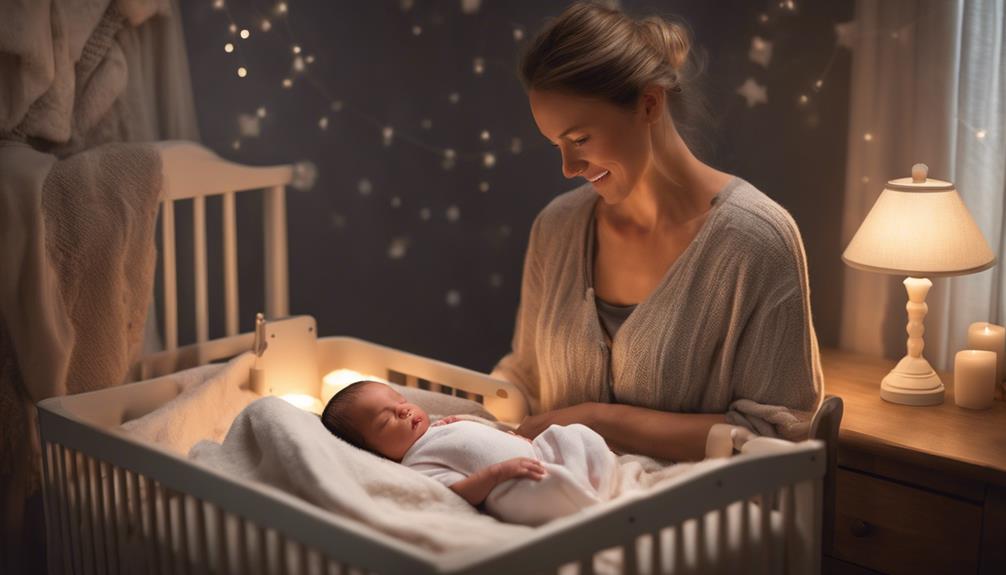When it comes to dressing your newborn for sleep, it's like solving a puzzle with ever-changing pieces. Each baby is unique, and their nighttime attire plays an important role in their comfort and safety.
But fear not, we have you covered with practical advice and expert tips to navigate this sartorial conundrum. So, before you tuck in your little one for the night, let's unravel the mystery of what to dress them in for a peaceful slumber.
Key Takeaways
- Maintain room temperature at 68-72°F for newborn sleep.
- Dress newborns in one extra layer than adults.
- Watch for signs of temperature imbalance to adjust clothing.
- Choose breathable fabrics and avoid loose blankets for safe sleep.
Temperature Guidelines for Newborn Sleep
When preparing newborns for sleep, it's important to make sure the room temperature falls within the recommended range of 68-72 degrees Fahrenheit. The American Academy of Pediatrics advises that babies should be dressed in one additional layer compared to what adults would wear in the same environment. This extra layer helps regulate the baby's body temperature and guarantees they stay warm without overheating. Keeping the room temperature in check is critical as overdressing can increase the risk of Sudden Infant Death Syndrome (SIDS) in newborns. It's essential to strike a balance between keeping the baby warm and preventing them from getting too hot during sleep.
To maintain a comfortable sleep environment, it's advisable to monitor the room temperature regularly with a home thermostat or indoor thermometer. This practice allows caregivers to adjust the baby's clothing accordingly, making certain they're neither too warm nor too cold while they rest. Trusting your instincts and using common sense when dressing your newborn for sleep can go a long way in promoting safe and sound slumber.
Proper Attire for Newborn Sleep

For best comfort and safety during newborn sleep, it's important to select the proper attire that aligns with the room temperature and promotes healthy rest.
Dressing your infant in clothes suitable for the room temperature is key. Cotton or muslin swaddles can assist in regulating their body temperature effectively. Following the American Academy of Pediatrics' advice, it's vital to avoid overdressing your newborn to prevent overheating.
Opting for one-piece footed pajamas not only provides warmth but also makes diaper changes easier during sleep. Maintaining the room temperature between 68-72 degrees Fahrenheit is recommended, with clothing layers adjusted accordingly for your newborn's comfort.
Recognizing Signs of Overheating in Newborns
Recognizing signs of overheating in newborns requires vigilant observation of physical cues such as a sweaty neck or hair, flushed cheeks, and a clammy core. To make sure your newborn's comfort and safety levels are essential, it's important to be attentive and responsive.
Here are essential tips for identifying and addressing overheating in your little one:
- Reduce Layers: If your newborn seems too warm, consider removing a layer or two underneath the sleep sack or swaddle.
- Warm Newborns: For infants who feel warm but still need to be swaddled, having only a diaper underneath can help regulate their temperature.
- Airflow Products: Choose items that offer more airflow to help keep warm newborns cool and comfortable during sleep.
- Adjust Dressing: Regularly check and adjust your newborn's dressing to make sure they're neither too hot nor too cold for the best sleep conditions.
Identifying Signs of Coldness in Newborns

To guarantee your newborn's comfort and well-being, it's crucial to be able to identify signs of coldness in infants. A cold newborn's core will feel cool to the touch, indicating the need for additional warmth.
While checking fingers and toes can provide some insight, they aren't always reliable indicators of a newborn's overall warmth level. If your baby feels cold at night, it's recommended to add an extra layer of clothing rather than using blankets to make safe sleep in line with guidelines. Remember to avoid placing loose items in the crib to reduce any risks.
If you ever have concerns about your newborn's temperature or how to maintain their core warmth, seeking your pediatrician's guidance is essential. By staying attentive to these signs and following expert advice, you can help keep your little one warm and cozy throughout the night.
Layering Tips for Newborn Sleep

When dressing your newborn for sleep, make sure they're dressed in one additional layer compared to your own sleep attire. This helps regulate their body temperature and ensures they stay cozy throughout the night.
Here are some essential tips for layering your newborn for bedtime:
- Choose cotton or muslin: Opt for breathable fabrics like cotton or muslin for your newborn's sleepwear to promote airflow and comfort.
- Swaddle or sleep sack: Consider using a swaddle or sleep sack to provide a sense of security while keeping your baby comfortably covered.
- Avoid loose blankets: To reduce the risk of suffocation, avoid using loose blankets in your baby's crib and opt for safer alternatives like sleep sacks.
- Temperature regulation: Keep an eye on the room temperature and dress your baby accordingly. Remember, it's better to slightly underdress than to overdress to prevent overheating.
Conclusion
In summary, ensuring our newborns are dressed appropriately for sleep is vital for their safety and comfort. By following the guidelines provided in this detailed guide, we can create a conducive sleep environment that promotes healthy sleep habits.
Remember, a well-dressed baby is a happy baby, so let's prioritize their sleep attire to ensure they get the rest they need.
Stay informed, stay vigilant, and watch your little ones thrive.










